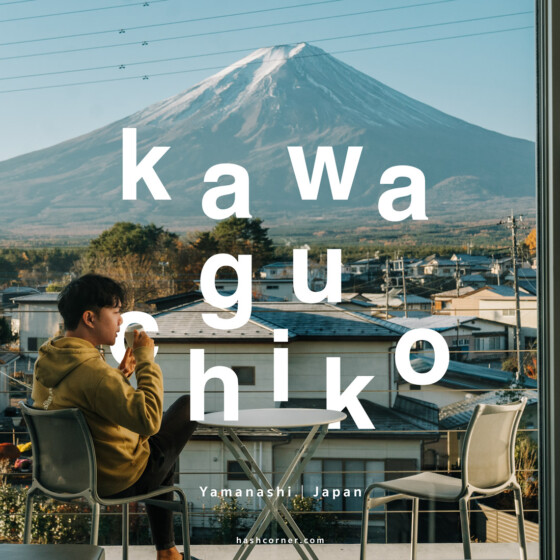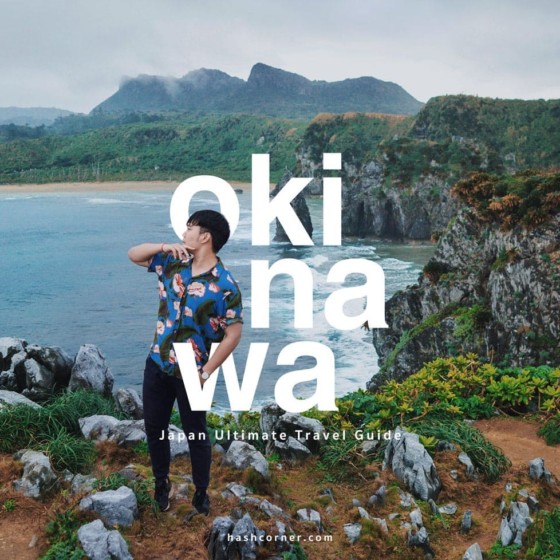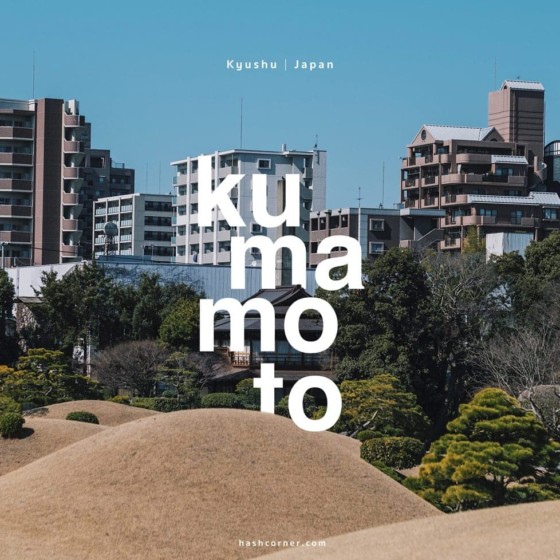
Nagasaki is a city with a lot of history and emotion. It’s a place where you can both remember the tragic event of the atomic bomb and also see the beautiful city that has risen from the ashes. I’ll be taking a day trip to Nagasaki from Fukuoka, and I can’t wait to see all the sights and pay my respects to the victims. Let’s take a look at where I’ll be going. Let’s Go!
Northern Kyushu Island itinerary
Embark on a journey to the northern island of Kyushu, a land of contrasts and diversity, where modern cities and ancient traditions coexist in harmony. On my 8-day trip, I had the opportunity to explore the best that this island has to offer – from the vibrant metropolis of Fukuoka to the historical and picturesque Nagasaki, the idyllic hot spring town of Yufuin, and the charming castle town of Kumamoto. I also ventured to the lesser-known gems of Takachiho and Mount Aso, immersing myself in the island’s natural splendor. Each day was a new adventure, and I urge you to plan your own trip to this incredible destination and follow my journey through my detailed reviews of each city I visited. Click to discover the hidden gems and must-see attractions of Kyushu Island in each city on the itinerary below.
| Day | Overnight City | Itinerary |
| 1 | Fukuoka | Fukuoka read the detailed review |
| 2 | Fukuoka | Dazaifu + Fukuoka read the detailed review |
| 3 | Fukuoka | Nagasaki – Nagasaki Peace Park |
| 4 | Fukuoka | Yufuin read the detailed review |
| 5 | Kumamoto | Kumamoto read the detailed review |
| 6 | Kumamoto | Takachiho read the detailed review |
| 7 | Fukuoka | Mount Aso read the detailed review |
| 8 | – | Flying back to my country, Thailand. |
Do I Need to Buy a Pass to Travel to Nagasaki?
If you visit many cities in Kyushu, not just Nagasaki, I recommend you purchase a JR train pass for cost savings, convenience, and speed. The most recommended pass is the JR Kyushu Rail Pass, which comes in three variations: the All Kyushu Area Pass, the Northern Kyushu Area Pass, and the Southern Kyushu Area Pass. The best pass for you will depend on your travel itinerary.
🚅✨ Based on the review you’re reading here, I only traveled to the northern part of Kyushu Island, specifically to the cities of Fukuoka, Nagasaki, Yufuin, and Kumamoto. For those who are looking for an economical, convenient, and easy way to travel, I recommend purchasing the Northern Kyushu Area Pass. This pass can be used on JR trains between cities, but keep in mind that it cannot be used on the Fukuoka subway or trams in other cities.

I highly recommend purchasing your JR train pass online through the Klook website, which sells almost every travel ticket in the world at a cheaper price compared to other websites. The process of buying, paying, and picking up the pass is easy and convenient. You can purchase the pass and pay using a credit card on the website. Once your purchase is complete, Klook will send an exchange order or booking confirmation to your email, which you can then print out and exchange for a physical pass at the JR Ticket Office. The specific location I used for this exchange was at the JR Hakata Station.

From my personal experience, I can say that buying the JR Northern Kyushu Pass through Klook was incredibly convenient. I purchased it only 2 days before my trip to Japan and was able to easily print the confirmation from my email and exchange it for the physical pass in Japan. It was much simpler than I had expected.
For those with different plans, if you are only planning to visit Southern Kyushu, the Southern Kyushu Area Pass would be the best option. But if your plans include both Northern Kyushu and other areas like Hiroshima or the Kansai region, such as Osaka, I recommend purchasing the Sanyo-San’in-Northern Kyushu Area Pass instead. It will give you more flexibility and allow you to fully explore all the different areas that you are interested in.
Kyushu Railway Pass Summary
- 🎫 JR Kyushu Pass is divided into 3 different passes: all Kyushu region, Northern Kyushu and Southern Kyushu.
- JR Kyushu Pass (All Area): This pass allows you to travel on JR lines for sightseeing in various cities in Kyushu such as Hakata (Fukuoka), Nagasaki, Kumamoto, Yufuin, Beppu, Miyazaki, and Kagoshima. You can take the Yufuin no Mori sightseeing train to Yufuin and reserve seats in advance via the JR Kyushu website. There are 3, 5, and 7-day plans available, with starting prices at JPY 17,000 (~$130). [Purchase via Klook] [Purchase via KKday]
- JR Northern Kyushu Pass : (I’ve used this pass in this review.) This pass allows you to travel on JR lines for sightseeing in various cities in Northern Kyushu such as Hakata (Fukuoka), Nagasaki, Kumamoto, Yufuin, Beppu, and Oita. You can take the Yufuin no Mori sightseeing train to Yufuin and reserve seats in advance via the JR Kyushu website. There are 3 and 5-day plans available, with starting prices at JPY 10,000 (~$77). [Purchase via Klook] [Purchase via KKday]
- 🎫 Sanyo-San’in-Northern Kyushu Area Pass: This pass is for traveling on JR train lines to prominent cities such as Osaka, Kyoto, Nara, Kobe, Wakayama, Himeji, Okayama, Hiroshima, Yamaguchi, Fukuoka, Kumamoto, and Nagasaki. You can take Sanyo-Kyushu Shinkansen round trip Osaka-Kobe-Okayama-Hiroshima-Yamaguchi-Hakata(Fukuoka)-Kumamoto, Kansai-Airport Express Haruka from Kansai Airport (KIX) and Yufuin no Mori Sightseeing Train (however, online seat reservation is not possible with this pass). It’s available in a 7-day plan, starting price at JPY 23,000 (~$177). [Purchase via Klook] [Purchase via KKday]
- 🎫 Japan Rail Pass – All Area (JR Pass): This pass allows you to ride JR trains across the entire country, including almost all Shinkansen bullet trains. It also allows you to ride on the Yufuin no Mori sightseeing train, but you cannot reserve seats online with this pass, you must do it at the JR station. This pass is available in a 7-day plan and the price is about JPY 44,810 (~$344). [Purchase via Klook] [Purchase via KKday]
The 1-Day Tram Pass in Nagasaki is a must-have!
Traveling in Nagasaki is super easy with the 1-Day Tram Pass. You can choose between taking the bus or the tram, but in this review, we’re focusing on the tram. Normally, each ride on the tram costs 120 yen, but if you’re planning on taking the tram more than 4 times in a day, I suggest buying a 1-Day Tram Pass for 500 yen at the Tourist Information Center at Nagasaki Station. Trust me, it’s totally worth it! Using the pass is simple, just show it when you get off the tram.

There are about 5 different tram lines in Nagasaki City, so make sure to check which line goes where you want to go. You can tell which line you’re on by looking at the color of the sign and the number on the front of the tram. While you’re on the tram, use the tram link map to see what station you’re getting off at, and keep an eye on the monitor in the car to see how many stops are left. Press the buzzer button when you’re approaching your stop to let the staff know. It’s really not complicated at all! ⎡See the Nagasaki City Tram map here⎦

Nagasaki Peace Park
Alright, so our first stop on our trip is the Nagasaki Peace Park. To get there, we’ll take either tram line 1 (the blue one) or line 3 (the red one) to Matsuyamamachi Station. Once we get off, we’ll see a beautiful path lined with flowers. That’s the way we’re heading, just cross the street.
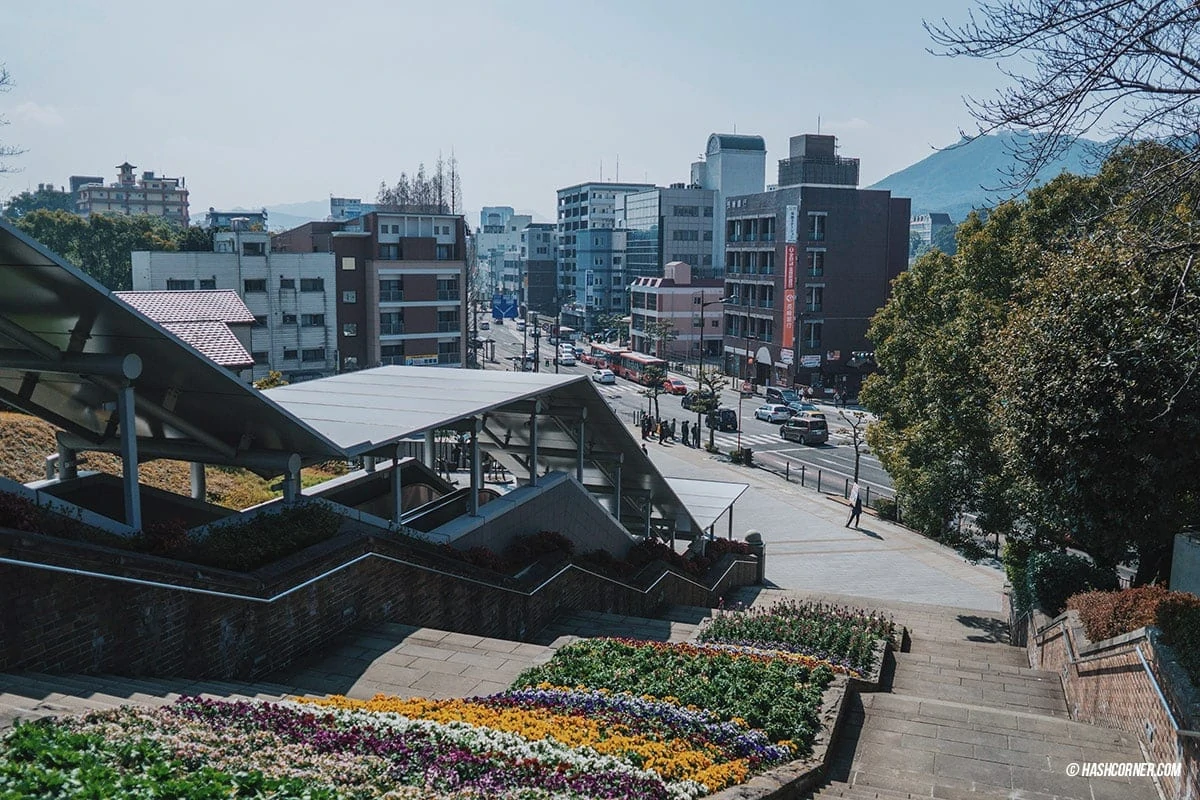
Once we reach the top, we’ll see the Fountain of Peace which is shaped like the wings of a dove, symbolizing peace. It’s said that after the atomic bomb hit Nagasaki, one of the reasons for many deaths was a lack of drinking water.

The main attraction of the park is the Peace Statue. It’s a strong and powerful statue ready to protect peace. One hand is pointing to the sky, representing the atomic bomb, and the other hand is pointing to the side, symbolizing peace. The statue has its eyes closed as if in prayer, wishing for no more nuclear explosions like this to happen.




The Peace Park in Nagasaki is a beautiful and peaceful place, but it does have a bit of a somber atmosphere due to its history during World War II. When we visited, everyone seemed to be standing in silence, looking at the statue. But, don’t let that get you down! If you walk a bit further behind the garden, you’ll find a great lookout spot where you can see the Urakami Cathedral in the distance. This cathedral was also an important historical site during the war.


As we leave the Peace Park and continue on our journey, we’ll make our way to the Nagasaki Atomic Bomb Museum. Along the way, we’ll come across an open space that marks the epicenter of the atomic bomb, and a memorial to commemorate the event.
On August 9, 1945, at 11:02 a.m., an atomic bomb nicknamed “Fatman” was dropped by the U.S. Army, exploding at this spot, 500 meters above ground level. The bombing destroyed 1/3 of Nagasaki, resulting in 74,000 wounded and 75,000 deaths. It’s a tragic event in history, but it’s important to remember and learn from it.

Nagasaki Atomic Bomb Museum
As we walk a bit further from the epicenter of the atomic bomb, we’ll come across the Nagasaki Atomic Bomb Museum. This is a must-visit for anyone who’s interested in war history. The entrance fee is quite affordable, with adult tickets costing only 200 yen.


Inside the museum, we’ll learn all about the atomic bomb that took place in Nagasaki. There are four rooms to explore, each with photos, videos, and information about the bombing. We’ll see a sequence of the events that took place, watch a movie in the screening room, and see artifacts that were left behind. This museum is a great way to learn more about the bombing and gain a deeper understanding of what happened. Plus, all the information is provided in English so it’s easy for travelers to understand.


Mount Nabekanmuri
Let’s take a break from the solemn atmosphere and check out something that’ll lift our spirits. Our next stop is a hidden gem viewpoint that offers a breathtaking view of Nagasaki City. The viewpoint is located on Mount Nabekanmuri and is near Glover Garden, a popular tourist spot known for its European-style architecture and gardens. The garden was once home to Western merchants, including Thomas Blake Glover, a Scottish merchant who settled in Nagasaki.
The best way to reach the viewpoint is by taking the Glover Skyroad (Ishibashi Station) and taking the elevator to the top of the mountain. From there, just follow the signs to the viewpoint. It’s easy!


The path to Mount Nabekanmuri’s viewpoint can be a bit confusing as it winds through the foothill village. But don’t worry, just pin the location on Google Maps and follow it as a guide. You’ll know you’re on the right track when you reach a big bridge like the one in the picture. It might be a bit confusing at first, but trust me, it’s worth it!

When you reach the top, you’ll find a beautiful viewpoint that not many tourists know about. The view is amazing and you can see 360 degrees around. If you look carefully, you’ll even spot a big pier on the opposite side, which is an important historical area for the Mitsubishi brand. You’ll also see the 7th longest suspension bridge in the world, the Megamio Bridge, connecting western and southern Nagasaki.

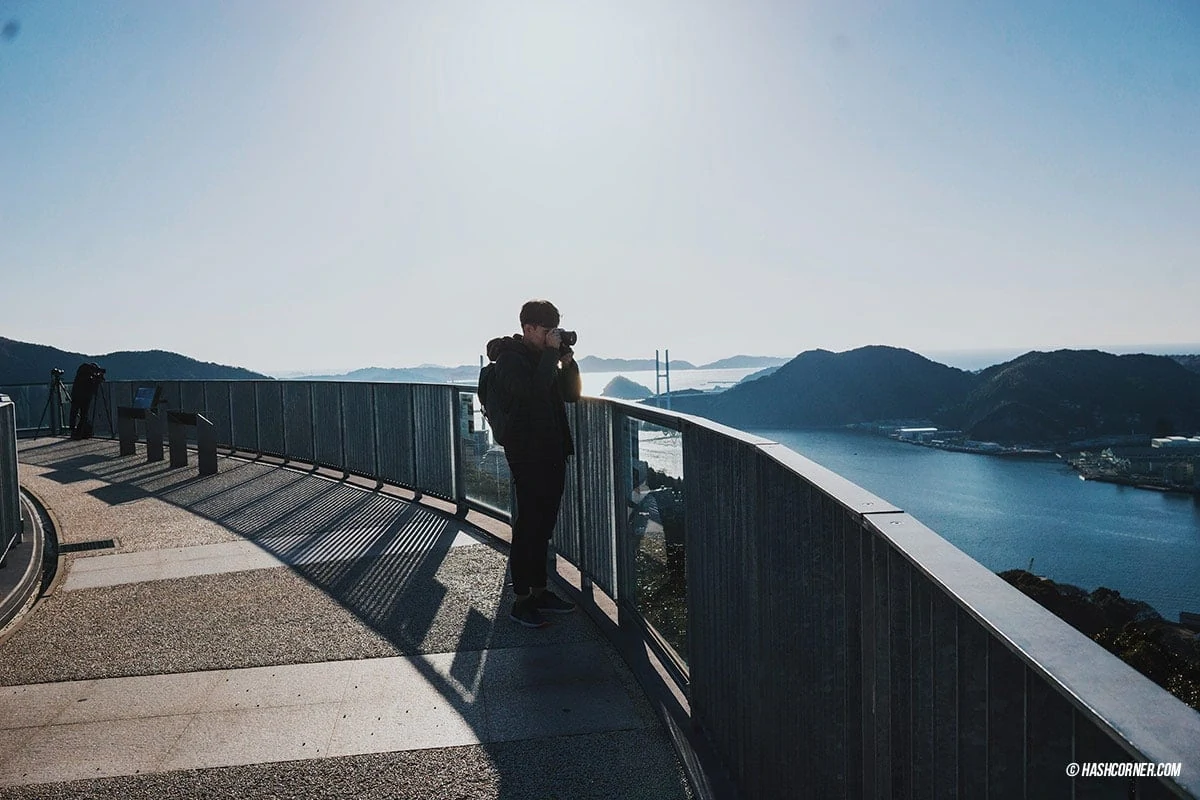

From the viewpoint, you’ll have a great view of Nagasaki Bay and if the sky is clear, you might even spot the abandoned island of Hashima (Gunkanjima -Hashima-), an island where Mitsubishi’s coal industry used to be. It’s a really interesting place to visit, but you can only go on a tour, not by yourself.


After taking in the view, it’s time to head back down. The easiest way to get back to Ishibashi Station is by taking the Glover Skyroad elevator. I know it can be confusing to find your way back, but trust me, this is the easiest way. So enjoy the view, take your time, and don’t worry about getting lost.”
Mount Inasa
After coming down from Mount Nabekanmuri, let’s head over to see another popular view – Mount Inasa. They say this spot has the most beautiful night view, and is considered one of the top three in all of Japan. I’ve been to Mount Hakodate in Hokkaido, but unfortunately, it was raining and stormy, so I didn’t get to see the amazing view. I haven’t been to Mount Rokko in Kobe yet, though.
To get to the top of Mount Inasa, we’ll take the cable car (Ropeway). The round-trip fare is 1,230 yen. To get to the Ropeway station, we can take a bus. If we’re coming from Nagasaki Station, we’ll take line 3 or 4. If we’re coming from Glover Garden, we’ll take line 4 and get off at the Ropeway (ロープウェイ前) stop. I recommend checking Google Maps as well, just in case the signs has no English.
I didn’t do much research on transportation when I went, but I did have a tram pass. So, we just took the tram from Ishibashi Station to Takaramachi Station after coming down from Mount Nabekanmuri, and then walked about a kilometer to the Ropeway station. It was a bit of a walk, but we saw some beautiful views of the city along the way.
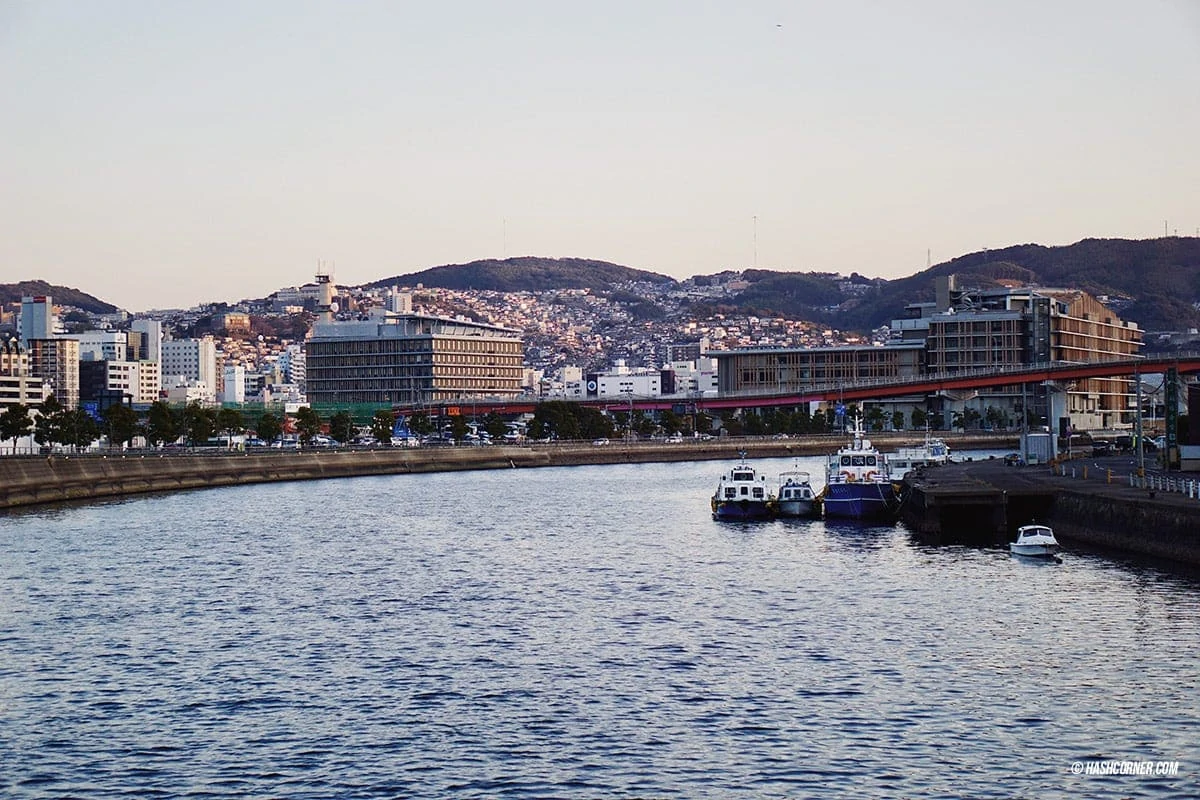

When we arrived at the cable car station, we were starting to feel a little tired, but the good news is that there weren’t many people around. We quickly bought our tickets and hopped on the cable car. The ride only took about 4 minutes and we were lucky enough to be in the front of the line. I recommend standing at the back of the car to get the best view of Nagasaki City – it’s worth the ticket price alone, trust me!


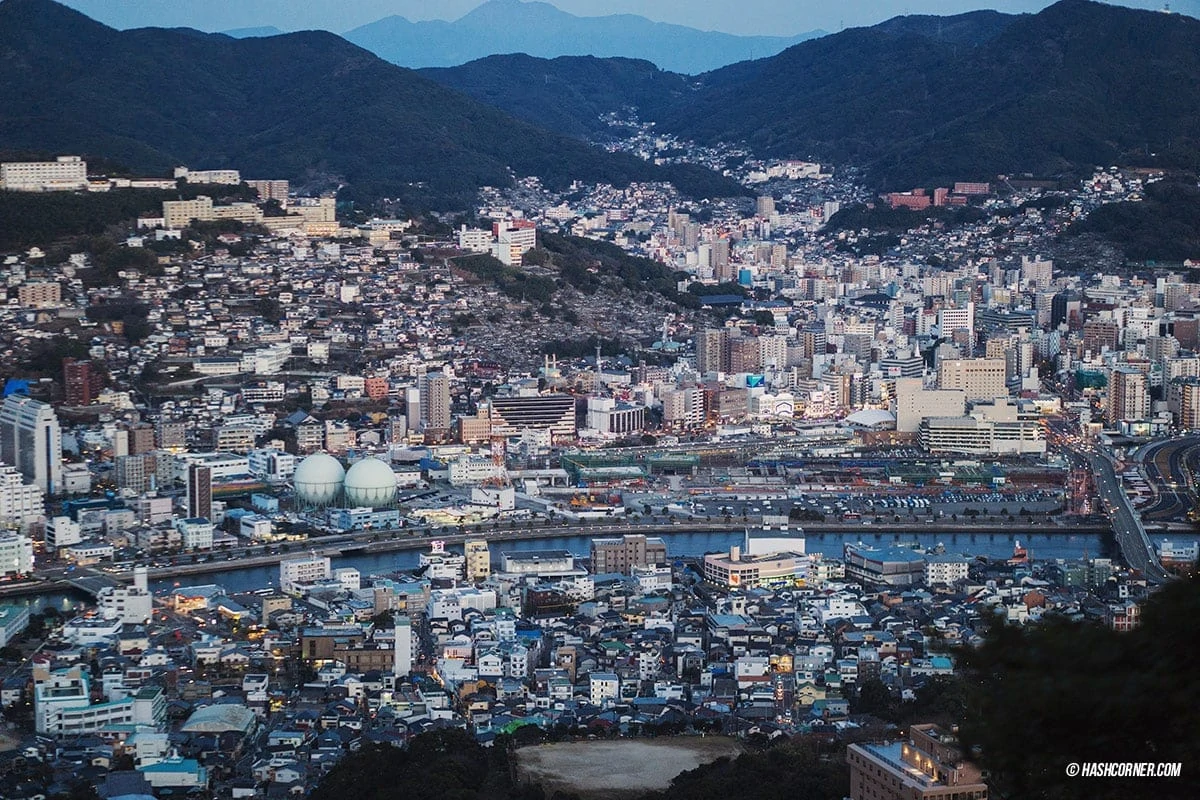

The best time to see the view from Mount Inasa is from sunset to night, so make sure to plan accordingly. Once we reached the top, we walked a bit further and stumbled upon a cylindrical building that served as a viewpoint. We could go inside for free and walk around the circular corridor until we reached the top of the building where there was an open courtyard with a 360-degree view of Nagasaki. It’s absolutely beautiful!




If you’re coming as a couple, this is the perfect romantic spot. Holding hands while taking in the beautiful night view and cool weather is a guaranteed shy and twisting moment.



Nagasaki Shinchi Chinatown
Hey friends, if you’re visiting Nagasaki during Chinese New Year or mid-February to early March, make sure to check out the Nagasaki Lantern Festival in Chinatown. The whole city is lit up with around 18,000 red lanterns and twinkling lights, it’s a sight to see! At night, everyone flocks to Chinatown to take pictures and check out the lights.
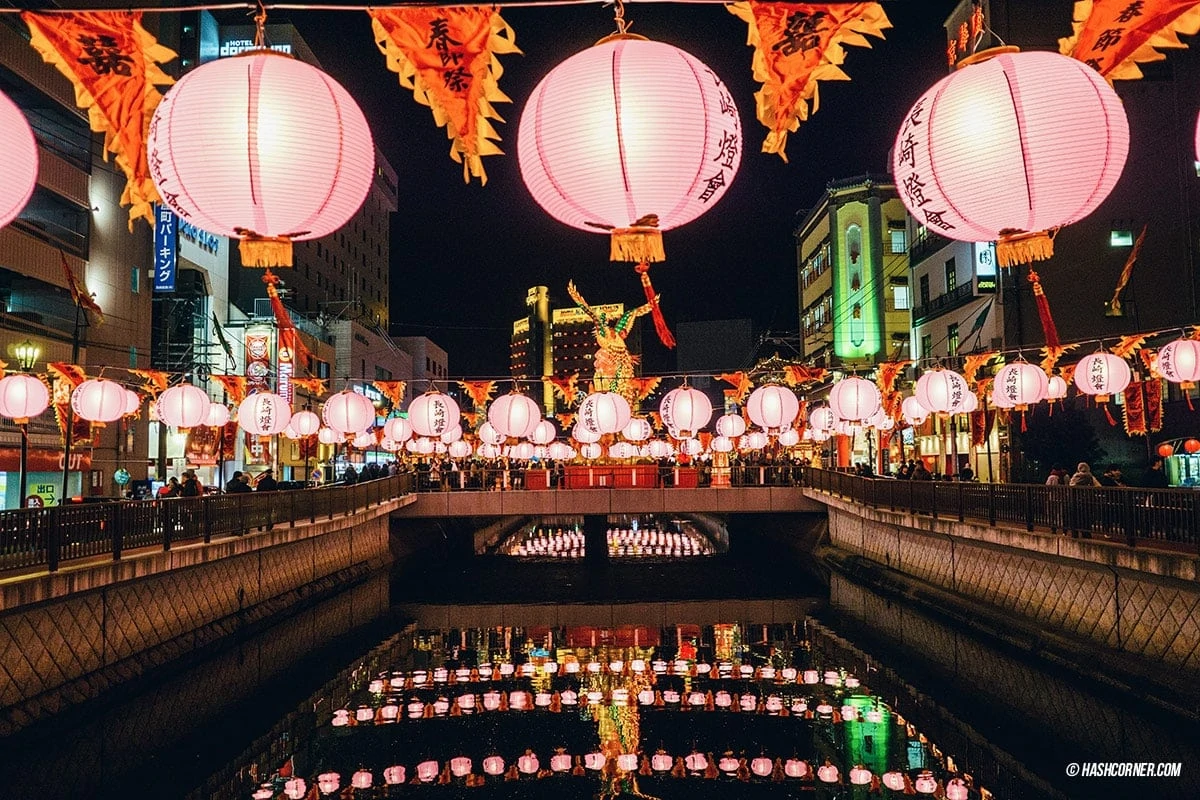
Make sure to head to the open courtyard in front of Chinatown to see the Chinese Zodiac year being celebrated in a spectacular way.


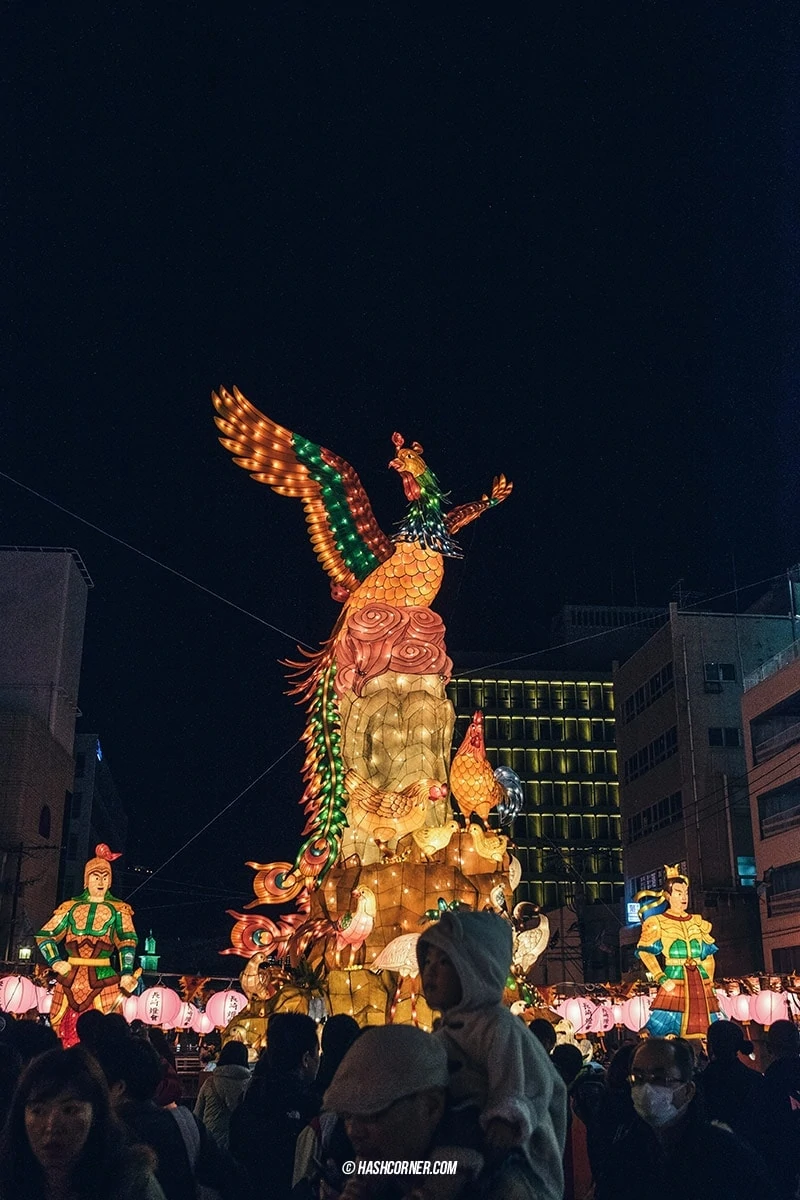
When you take a right, you’ll come across an alley filled with lanterns. It’s packed with shops selling food, snacks, and souvenirs, but it’s worth pushing through the crowds just to see the lanterns. It’s so beautiful! Trust me, if you’re visiting during Chinese New Year, you don’t want to miss it.


Wrapping up your day trip in Nagasaki with a visit to the Lantern Festival during Chinese New Year is the perfect way to end it. Even though there are so many more places to explore, limited time for a day trip only allows me to visit a few. But trust me, it’s still worth it!
Recommended accommodation in Nagasaki
As I mentioned, I came to Nagasaki with a 1-day trip plan starting from Fukuoka. So, I didn’t spend a night over there. But as I was writing this Nagasaki review from my real travel experience, plus, I did the accommodation and hotel research, I know a good-convenient area, and would love to share the 3 hotels which I think it serves you the best. If I repeat visiting Nagasaki, I will probably choose one of these 3 selected hotels as well. Let’s check the info below.
JR Kyushu Hotel Nagasaki
Staying at the JR brand hotel is always a convenient choice because of its prime location. Just like this one, it’s located right next to the JR Nagasai Station, so you won’t have to worry about dragging your suitcase around on the tram. Plus, it’s super easy to check-in at the hotel since you can just go up the escalator from the train station to the hotel’s second floor. And, there’s a mall nearby, which is perfect for grabbing a bite to eat or doing some shopping.

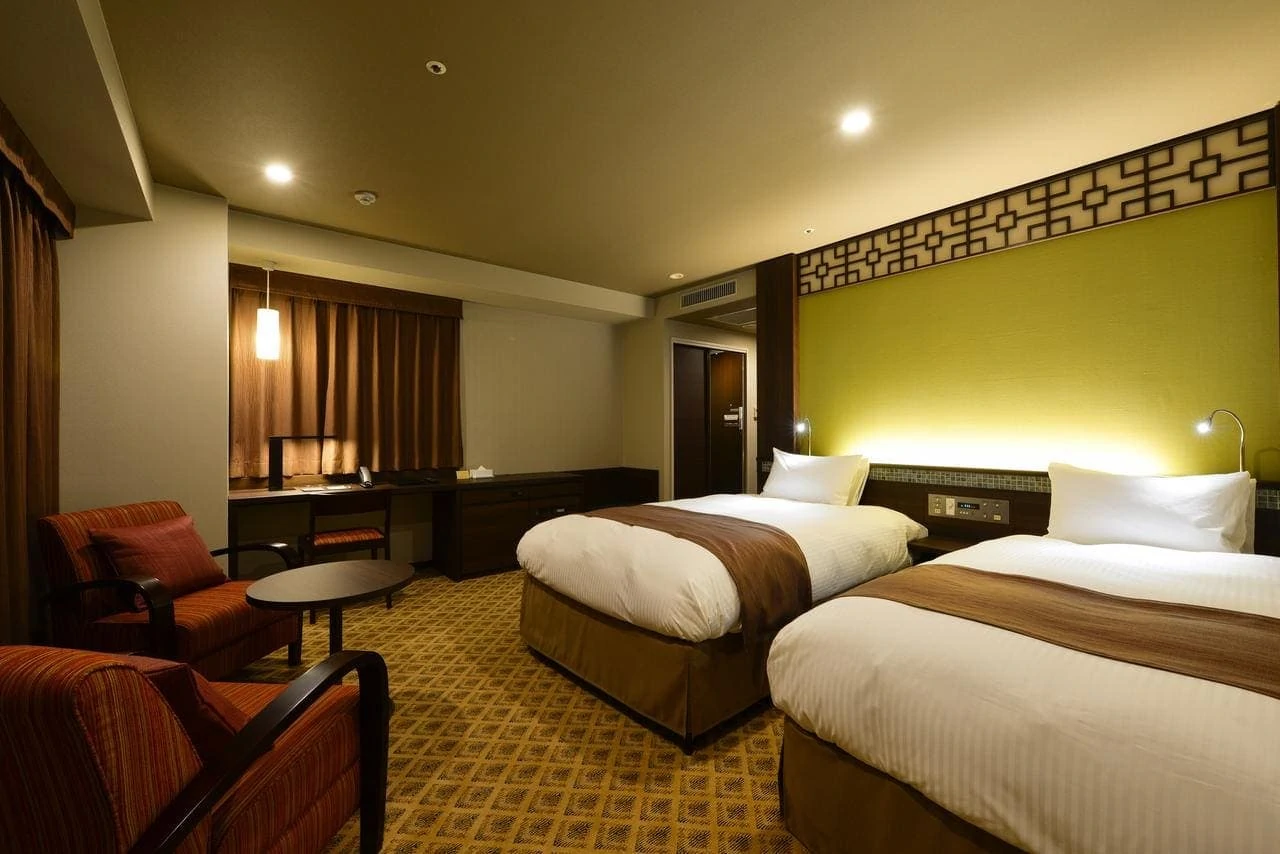
The hotel rooms are definitely worth the price, but the breakfast wasn’t the best. However, the Royal Host restaurant in the front lobby serves a tasty meal set for guests to choose from.
Compare JR Kyushu Hotel Nagasaki rates via Tripadvisor
Booking through: Agoda / Booking.com / Expedia / Trip.com
Hotel Forza Nagasaki
Hotel Forza Nagasaki is another great hotel in the city. With newly furnished rooms that are slightly bigger than the standard hotel room size in Japan, and all rooms being 100% non-smoking, it’s a comfortable place to stay. Each room also has an iPad for internet access and to check hotel information and services.
The location is super convenient, it’s right next to the Kankodori tram stop and close to Chinatown. Plus, the hotel lobby is on the 4th floor, and the floor below is a shopping arcade with restaurants and shops. You’ll feel right at home in this comfortable and convenient spot.

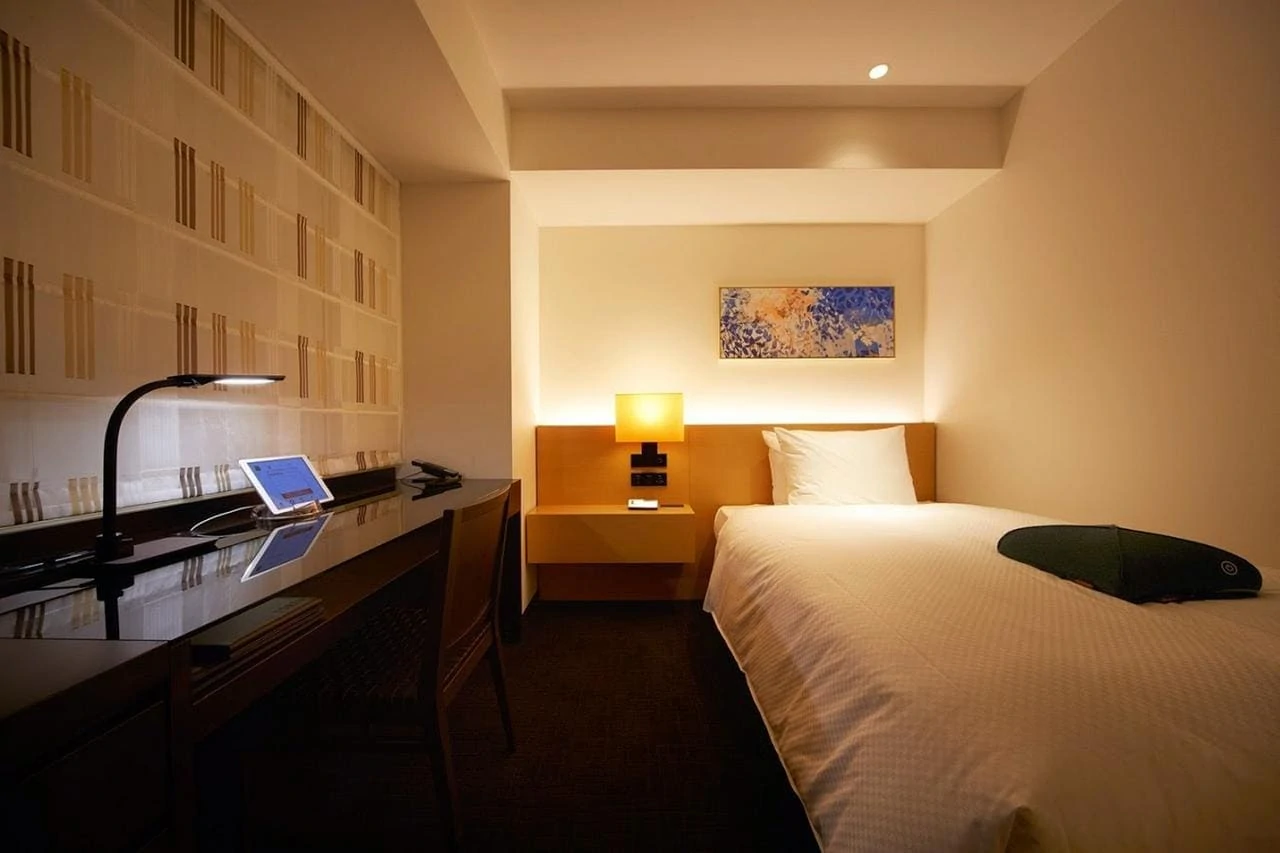
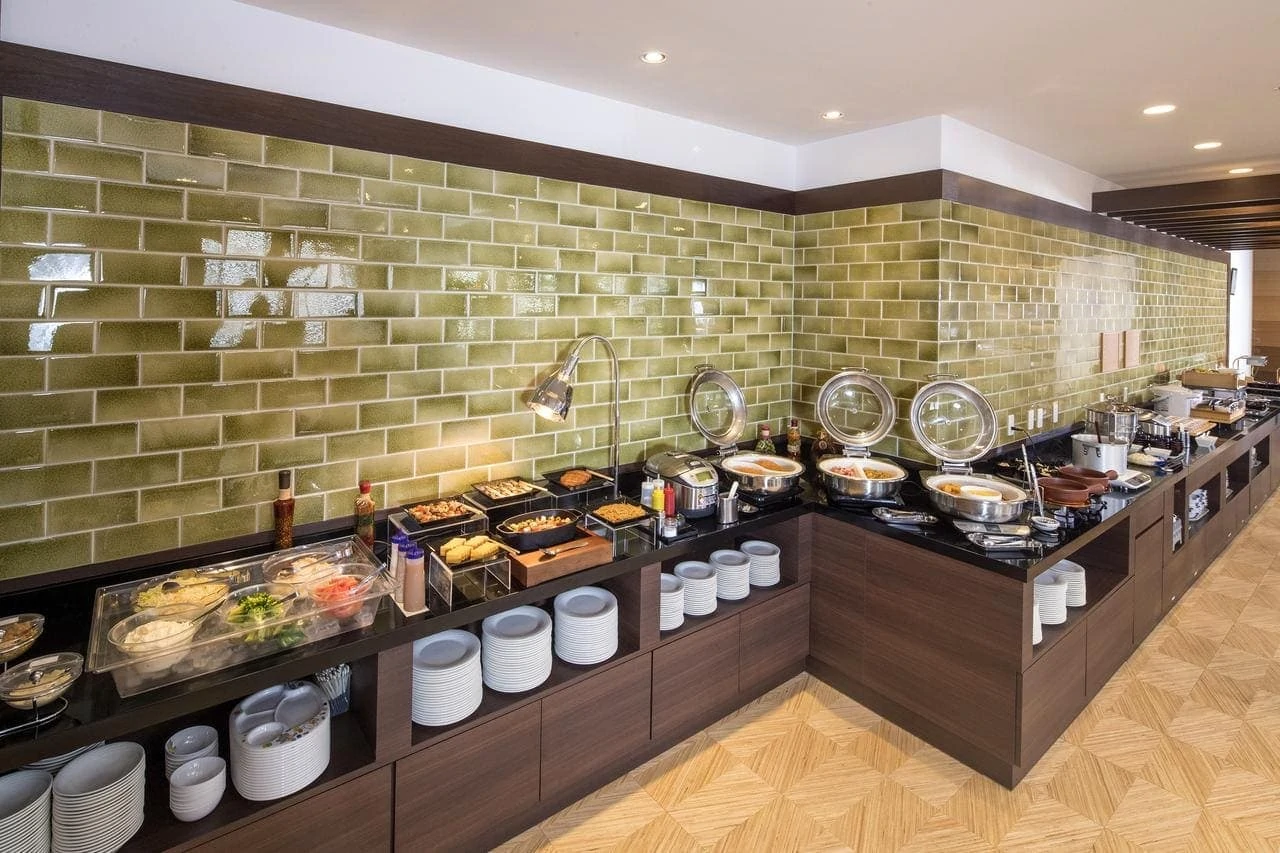
Just keep in mind that the hotel isn’t next to the JR station, it’s next to the tram stop. If you have a large suitcase, it might be a bit of a challenge to navigate, in that case, you might want to consider booking a hotel closer to the JR station like the JR Kyushu Hotel Nagasaki. But if you’re a backpacker, it’s a great choice.
Compare Hotel Forza Nagasaki rates via Tripadvisor
Booking through: Agoda / Booking.com / Expedia / Trip.com
First Cabin Nagasaki
If you’re traveling to Nagasaki solo, First Cabin Nagasaki is a great option for affordable top-class accommodations. The hostel is designed like an airplane cabin, with first-class and business-class rooms that are small and private, each with its own TV. I personally really enjoy this type of hostel.

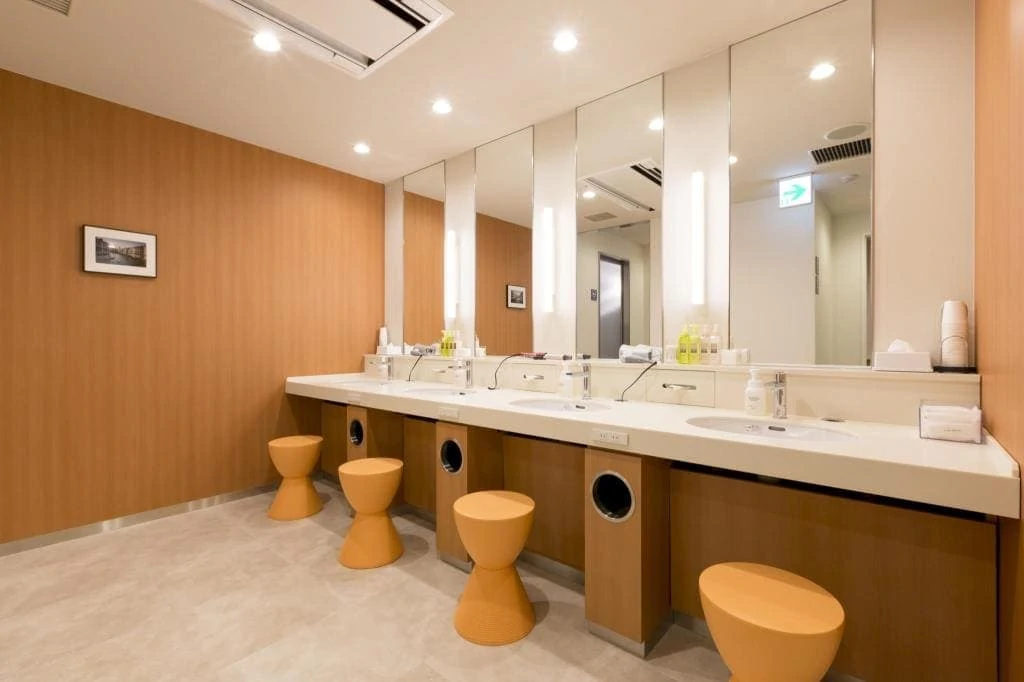

The hostel is located in the downtown area near Chinatown, just a short 85-meter walk from the Kankodori tram stop. It’s very convenient for solo backpackers, but if you’re lugging around a big suitcase, it might be a bit challenging to navigate the tram with it.
Compare First Cabin Nagasaki rates via Tripadvisor
Booking through: Agoda / Booking.com / Expedia / Trip.com
อ่านรีวิวเมืองนี้จบแล้ว
อ่านรีวิวเมืองอื่นในญี่ปุ่นต่อกันเลย 🤗
ญี่ปุ่นเป็นประเทศไม่กี่ประเทศที่นี่รู้สึกว่า ไปกี่ครั้งก็ไม่น่าเบื่อ ไปแล้วไปอีกได้ตลอด และยังประเทศที่ตัวเองตั้งมิชชั่นว่า อยากจะเก็บให้หมดทั่วประเทศ ฮ่าา เอาเป็นว่า HASHCORNER นี่ก็มีรีวิวญี่ปุ่นให้อ่านและตามรอยเยอะพอสมควร ทั้งหมดนับแล้วเกือบ 50 รีวิวแล้ว เยอะโคตร ใครที่มีแพลนไปเมืองไหนในญี่ปุ่นที่มีชื่อเมืองตามลิสด้านล่าง สามารถคลิกลิงค์อ่านต่อได้เล้ย
ภูมิภาคคันโต (Kanto Region)
1. รีวิว โตเกียว (Tokyo)
2. รีวิว โตเกียวดิสนีย์แลนด์ (Tokyo Disneyland)
3. รีวิว โตเกียวดิสนีย์ซี (Tokyo DisneySea)
4. รีวิว Harry Potter: Warner Bros. Studio Tour Tokyo
5. รีวิว โยโกฮาม่า (Yokohama)
6. รีวิว คามาคุระ (Kamamura)
7. รีวิว นิกโก้ (Nikko)
8. รีวิว ฮาโกเน่ (Hakone)
⸺⸺⸺⸺
ภูมิภาคคันไซ (Kansai Region)
9. รีวิว โอซาก้า (Osaka)
10. รีวิว Universal Studios Japan (USJ)
11. รีวิว เกียวโต (Kyoto)
12. รีวิว นารา (Nara)
13. รีวิว โกเบ (Kobe)
14. รีวิว ฮิเมจิ (Himeji)
15. รีวิว อิเสะ-ชิมะ (Ise-Shima) กำลังเขียน
16. รีวิว อิกะ อุเอโนะ (Iga Ueno) กำลังเขียน
17. รีวิว อะซุกะ (Asuka) กำลังเขียน
⸺⸺⸺⸺
ภูมิภาคชูบุ (Chubu Region)
18. รีวิว คานาซาวะ (Kanazawa)
19. รีวิว ชิราคาวาโกะ (Shirakawa-go)
21. รีวิว ทาคายาม่า (Takayama)
21. รีวิว คาวากุจิโกะ (Kawaguchigo)
22. รีวิว สวนสนุก Fuji-Q Highland
23. รีวิว ยามานากะโกะ (Yamanakako)
24. รีวิว ชิซึโอกะ (Shizuoka)
25. รีวิว อิซุ (Izu) กำลังเขียน
26. รีวิว คาวาซึ (Kawazu)
27. รีวิว อิโต (Ito) กำลังเขียน
28. รีวิว อาตามิ (Atami)
29. รีวิว คารุอิซาวะ (Karuizawa)
30. รีวิว นากาโน่ (Nagano)
31. รีวิว มัตสึโมโตะ (Matsumoto)
⸺⸺⸺⸺
ภูมิภาคคิวชู (Kyushu Region)
32. รีวิว ฟุกุโอกะ-ดาไซฟุ (Fukuoka-Dazaifu)
33. รีวิว นางาซากิ (Nagasaki)
34. รีวิว ยูฟูอิน (Yufuin)
35. รีวิว คุมาโมโตะ (Kumamoto)
36. รีวิว ภูเขาไฟอะโสะ (Mount Aso)
37. รีวิว ทาคาชิโฮ (Takachiho)
⸺⸺⸺⸺
ภูมิภาคโอกินาว่า (Okinawa Region)
38. รีวิว โอกินาว่า (Okinawa)
⸺⸺⸺⸺
ภูมิภาคฮอกไกโด (Hokkaido Region)
39. รีวิว ซัปโปโร (Sapporo)
40. รีวิว โอตารุ (Otaru)
41. รีวิว อาซาฮิกาวะ-บิเอะ (Asahikawa-Biei)
42. รีวิว อะบาชิริ-คุชิโระ (Abashiri-Kushiro)
43. รีวิว ฮาโกดาเตะ (Hakodate)
⸺⸺⸺⸺
ภูมิภาคชูโกกุ (Chugoku Region)
44. รีวิว ฮิโรชิม่า (Hiroshima)
45. รีวิว เกาะมิยาจิม่า (Miyajima)
46. รีวิว โอคายาม่า-คุราชิกิ (Okayama-Kurashiki)
⸺⸺⸺⸺

